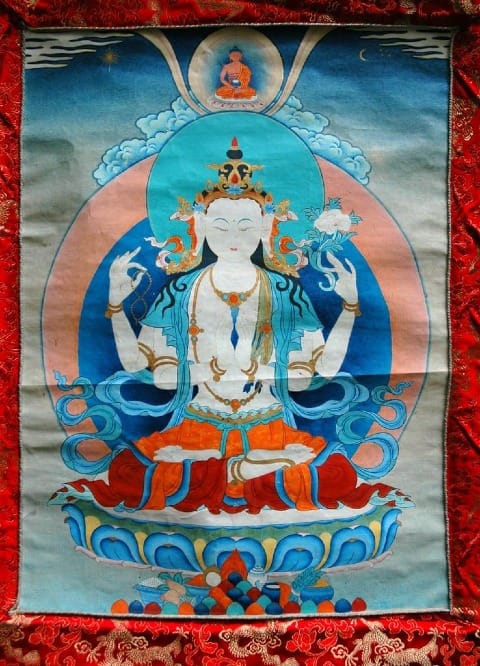In Indo-Tibetan Vajrayana Buddhism (Engl.: Diamond Way), that was primarily practiced in Tibet and in Himalayan countries such as Bhutan and Nepal, meditating on buddha forms is a common practice. Often confusingly referred to as ‘deities’, these buddha forms are expressions of a well-functioning mind (see trust-based approaches to meditation) and calling such forms to mind as “forms of energy and light” plays an important role in formal meditation practice.

In a recent study carried out by researchers in the US, it was shown that meditating on buddha forms as the one I offer here as example, enhances visuospatial processing efficiency. Compared to a group of meditators who engaged in a different form of meditation, called ‘open presence’, which involves a high levels of distributed attention without a particular object of attention, meditators who focused on an internally generated visual image of a buddha form, demonstrated a dramatic performance increase in a computerised mental imagery task they completed prior and directly after a meditation session.
Reference
- Kozhevnikov, M., Louchakova, O., Josipovic, Z. & Motes, M. A. (2009). The enhancement of visuospatial processing efficiency through Buddhist deity meditation. Psychological Science, 20 (5), 645–653. https://doi.org/10.1111/j.1467-9280.2009.02345.x /// pdf



